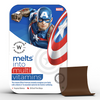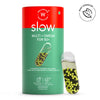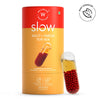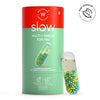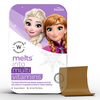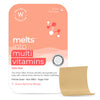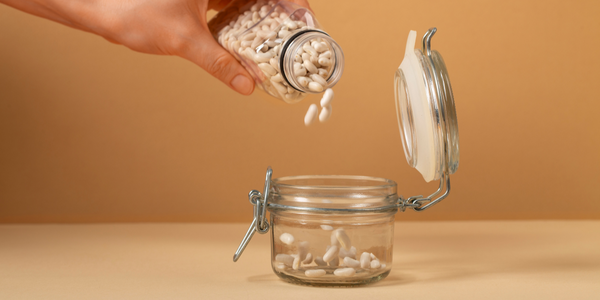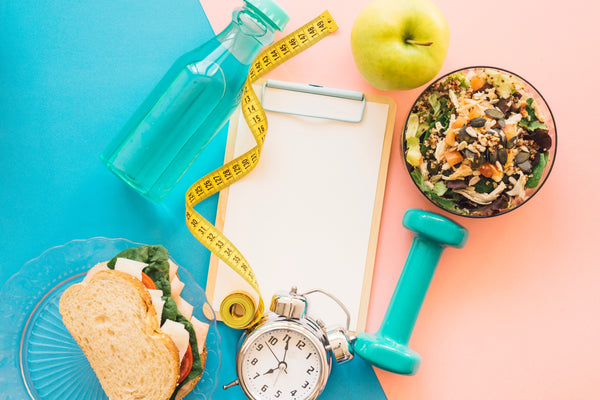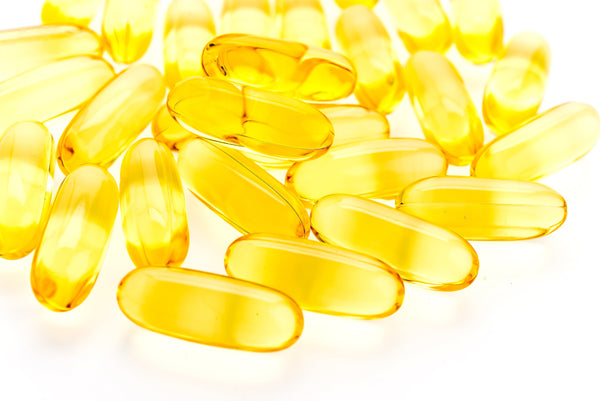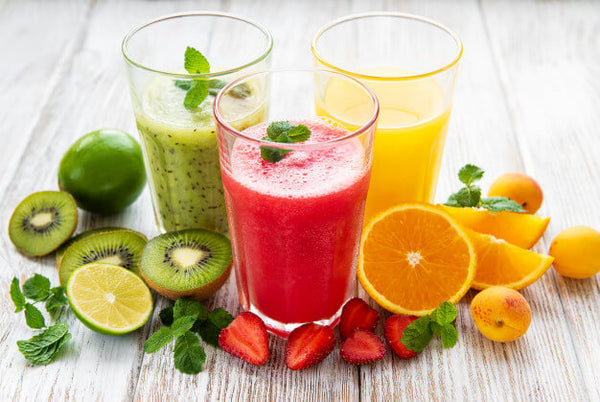When it comes to nourishing your body for glowing skin, healthy vision, and immunity, Vitamin A is essential. But let’s be honest, we often overlook this powerful nutrient in favour of trendier ones like collagen or vitamin C. Yet, Vitamin A plays a deeply foundational role, especially in skin renewal, protecting the eyes, and strengthening the immune system. If you're wondering how to get Vitamin A naturally, this blog breaks down everything, from the rich food sources of Vitamin A to tips on weaving them into your everyday meals.
Why Vitamin A Matters
Vitamin A is a fat-soluble nutrient that exists in two main forms:
-
Preformed Vitamin A (Retinol): Found in animal-based foods and known for its direct absorption. These are your natural sources of retinol, considered the best source of retinol for skin.
-
Provitamin A (Beta Carotene): Found in colourful plant-based foods. The body converts beta carotene into usable Vitamin A as needed.
Vitamin A supports:
-
Skin regeneration and healing
-
Vision (especially night vision)
-
Immune response
-
Cell growth and reproduction
Now, let’s explore the top 10 foods for Vitamin A that you can easily find in your kitchen.
1. Carrots

Packed with beta carotene, carrots are a go-to food for Vitamin A. Just 100g can provide over 300% of your daily Vitamin A requirement. They're also rich in antioxidants, making them wonderful for both skin and eye health.
How to eat: Add grated carrots to rotis, soups, or enjoy as gajar halwa with minimal jaggery for a healthier twist.
2. Sweet Potatoes (Shakarkand)

A powerhouse of beta carotene, sweet potatoes are not only filling but also promote skin radiance and help prevent dry eyes.
How to eat: Roast them with Indian spices or toss cubes into your curry or dal.
3. Spinach (Palak)

Among the most underrated sources of Vitamin A, spinach contains both beta carotene and iron, making it especially good for women’s health.
How to eat: Use in palak paneer, parathas, or a morning smoothie with apple and banana.
4. Mangoes

Yes, our beloved summer fruit is one of the most delicious fruits with Vitamin A. Rich in beta carotene, mangoes help improve complexion and prevent eye dryness.
How to eat: Enjoy diced mangoes, blend into lassi, or add to your breakfast chia pudding.
5. Red Bell Peppers (Lal Shimla Mirch)

This vibrant veggie is among the richest plant-based food sources of Vitamin A, packed with beta carotene, vitamin C, and antioxidants.
How to eat: Toss in stir-fries, salads, or pair with hummus as a snack.
6. Pumpkin (Kaddu)

Pumpkin is naturally rich in Vitamin A and has skin-loving nutrients like vitamin E and zinc.
How to eat: Add to sambhar, soups, or roast with a touch of mustard seeds and curry leaves.
7. Amaranth Leaves (Chaulai)

These Indian greens are a lesser-known natural source of retinol precursors and minerals. Excellent for boosting eye and skin health.
How to eat: Prepare chaulai bhaji or mix with moong dal.
8. Eggs

Egg yolks are excellent sources of Vitamin A in the preformed form, making them a fantastic natural source of retinol.
How to eat: Boil, scramble, or make a masala omelette for breakfast.
9. Liver (especially chicken or goat liver)
If you eat non-veg, organ meats like liver are among the richest food sources of Vitamin A. Just a small portion meets your daily needs.
How to eat: Try liver curry with onions, garlic, and spices like turmeric and pepper.
10. Milk & Ghee

Full-fat dairy products are good sources of Vitamin A in Indian diets. Ghee, in particular, is used widely in Ayurveda for skin and digestion.
How to eat: Use ghee for tadkas or drizzle over hot rice or rotis.
Tips to Maximise Vitamin A Absorption
-
Pair with healthy fats: Vitamin A is fat-soluble, so pair foods with healthy fats like ghee, olive oil, nuts, or seeds.
-
Avoid overcooking: Prolonged heat can reduce beta carotene levels. Steaming or lightly sautéing is ideal.
-
Diversify: Aim for both plant- and animal-based Vitamin A-rich foods to meet your needs more holistically.
Daily Needs: How Much Vitamin A Do You Actually Need?
The RDA (Recommended Dietary Allowance) for Vitamin A is:
-
Men: 900 mcg
-
Women: 700 mcg
-
Children: 300–600 mcg (depending on age)
When Diet Alone Isn’t Enough
If you’re vegetarian, have poor absorption, or lead a fast-paced lifestyle, getting sufficient Vitamin A daily can be tricky. In such cases, a trusted multivitamin supplement can help fill the gap without any guesswork.
Here are a few curated options that also offer synergistic nutrients for skin, eyes, and immunity:
Multi+ Omega 50+ Unisex: Perfect for adults 50+, this supplement blends Vitamin A, D3, Omega-3, and antioxidants to support vision, skin health, and cognitive function.
Slow Multi+ Omega for Him: With sustained-release technology, this daily dose supports male health, muscle recovery, and skin cell regeneration.
Slow Multi+ Omega for Her: A thoughtfully formulated blend to support hormonal balance, glowing skin, immunity, and eye health.
Melts® Multivitamin Oral Strips: Ideal for on-the-go wellness, these fast-dissolving strips include Vitamin A, biotin, and D3, a great add-on for teens and adults alike.
Final Thoughts
Whether you're aiming for glowing skin or sharp vision, understanding what food contains Vitamin A is the first step. Nature has generously provided us with an array of delicious, colourful, and versatile foods rich in Vitamin A. From a simple plate of palak paneer to a summer bowl of mangoes, making small, mindful additions can go a long way.
And remember — consistency matters more than complexity. Include a mix of fruits with Vitamin A, leafy greens, and natural fats in your routine, and complement it with a high-quality supplement to make sure your body doesn’t feel short of this essentail nutrient.









